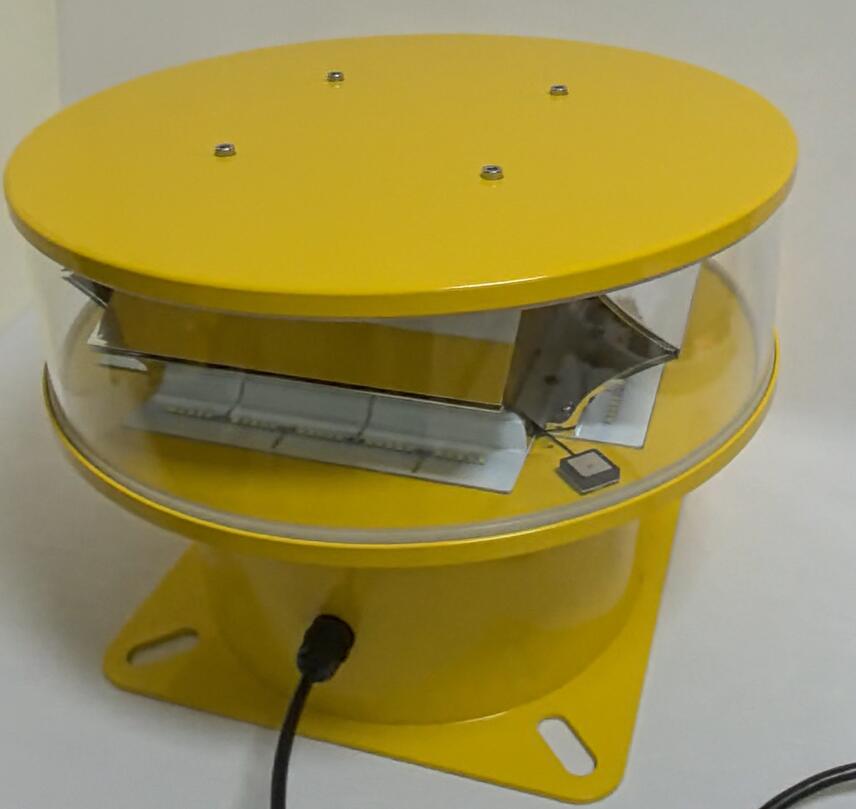Aviation Lamp for Chimney: Essential Safety Lighting for Industrial Structures
Industrial chimneys and exhaust stacks pose significant hazards to low-flying aircraft, especially near airports or in dense urban areas. An aviation lamp for chimney is a critical safety feature that ensures these tall structures remain visible to pilots day and night. This article explores the importance of aviation warning lights for chimneys , regulatory requirements, and the latest advancements in lighting technology.
Why Chimneys Need Aviation Warning Lights
1. Collision Prevention
Makes industrial chimneys visible to aircraft and helicopters

Critical in low-visibility conditions (fog, rain, nighttime)
Reduces risk of accidents near power plants, refineries, and factories
2. Regulatory Compliance
Required by FAA (AC 70/7460-1L) and ICAO (Annex 14)
Mandatory for chimneys taller than 200 feet (61 meters)
| Aviation Lamp for Chimney |
Non-compliance can result in fines and operational shutdowns
3. Drone & Urban Air Mobility Safety
Warns drones and eVTOL aircraft of tall obstructions
Supports safe navigation in expanding urban airspace
Types of Aviation Lamps for Chimneys
1. Low-Intensity Red Lights (L-810)
For chimneys under 150 feet (45 meters)
| Aviation Lamps for Chimney |
Steady-burning or flashing options
Ideal for small industrial facilities
2. Medium-Intensity White Strobe Lights (L-865)
For chimneys 150-700 feet (45-213 meters)
High-visibility flashes (40-60 per minute)
Effective during both day and night
3. High-Intensity White Strobes (L-856/L-857)
For chimneys exceeding 700 feet (213 meters)
Visible up to 20+ nautical miles
Used in major refineries and power plants
Key Features of Modern Aviation Lamps
✅ LED Technology
80% energy savings vs. traditional bulbs
50,000+ hour lifespan (minimal maintenance)
Instant on/off with no warm-up time
✅ Weatherproof & Corrosion-Resistant
IP66/IP68 waterproof rating
316 stainless steel housing for harsh environments
Heat-resistant materials for high-temperature exhaust stacks
✅ Smart Monitoring & Control
Remote diagnostics for real-time status checks
Automatic brightness adjustment (day/night modes)
IoT-enabled predictive maintenance alerts
Installation & Maintenance Best Practices
1. Optimal Placement
Mount at the top and midpoint of the chimney
Ensure 360° visibility with no obstructions
Follow FAA spacing guidelines for grouped structures
2. Power Supply Options
Hardwired electrical connection (most reliable)
Solar-powered systems for remote locations
Battery backup for uninterrupted operation
3. Routine Inspections
Monthly visual checks for damage or dirt buildup
Annual photometric testing to ensure compliance
5-year component replacement (batteries, LEDs)
Case Study: Aviation Lighting at a Petrochemical Plant
Installed dual red/white LED lights on a 500-foot (152m) chimney
Reduced energy costs by 65% compared to halogen lights
Integrated remote monitoring for maintenance alerts
Passed FAA and ICAO compliance audits with no issues
Future Trends in Chimney Warning Lights
🔹 AI-Powered Predictive Maintenance – Detects failures before they occur
🔹 LiFi-Enabled Lights – Transmits data to aircraft via light signals
🔹 Space-Aware Systems – Adapts for satellite and drone traffic
An aviation lamp for chimney is not just a regulatory requirement—it’s a vital safety measure that protects aircraft, industrial facilities, and surrounding communities. With advancements in LED efficiency, smart monitoring, and durable materials, modern chimney warning lights are more reliable and cost-effective than ever.
For plant managers, safety officers, and aviation authorities, ensuring proper obstruction lighting is essential for compliance and risk reduction. As airspace becomes more crowded, these systems will play an even greater role in preventing accidents and enabling safe flight operations.
